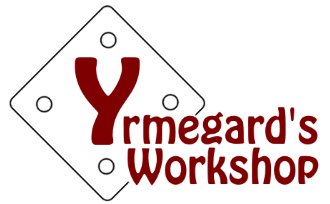Chevrons and diamonds 1 x 1

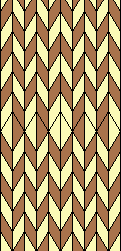
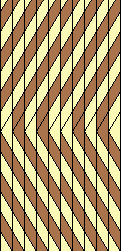
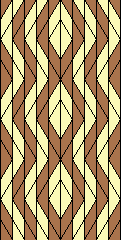
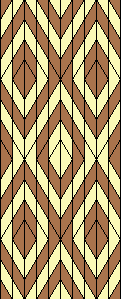
Threading diagram
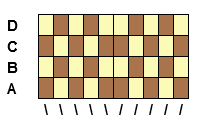
By threading and positioning your tablets symmetrically around vertical axis, you can weave chevrons while turning tablets continuously in one direction, or diamonds while turning tablets forward and backward in sequence. You can position tablets symmetrically with respect to multiple axes to create a more complicated pattern. Position of the tablets (either S or Z) determines the initial direction of the lines. On diagrams left to right: 1 – tablets’ position as per diagram above, with axis of symmetry in the middle, tablets are turned forward (18 times), then continuously backward; 2 – tablets’ position alternates per tablet, tablets are turned 6 times forward, 6 times back; 3 – all tablets are in the same position (\) and are tuned 6 times forward, 6 times back; 4 – tablets’ position as per diagram above, axis of symmetry in the middle, tablets are turned 2 times forward, 2 times back; 5 – tablets’ position \ \ / / / \ \ \ / /, three axes of symmetry, tablets are turned 4 times forward, 4 times back.
* Download a GTT pattern file. * Download this page in pdf format.
Chevrons and diamonds 2 x 2

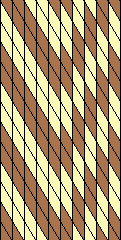
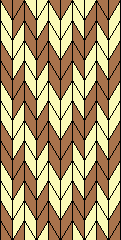

Threading diagram
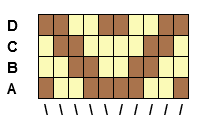
This is classic basic threading for a technique called “Egyptian diagonals”. Turning tablets continuously in one direction will produce chevrons of equal width, reversing turning direction of the tablets will produce diamonds. Symmetrical position of the tablets around the vertical axis is mandatory to produce smooth diagonals. On diagrams left to right: 1 – tablets’ position as per threading diagram, tablets continuously turned forward; 2 – all tablets are in the same position (\), tablets continuously turned forward; 3 – tablets’ position alternates per tablet, tablets continuously turned forward; 4 – tablets’ position as per threading diagram, tablets turned 4 times forward, 4 times back, 2 times forward, 2 times back.
* Download a GTT pattern file. * Download this page in pdf format.
Chevrons and diamonds 1 x 3

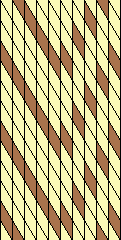
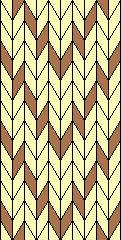

Threading diagram
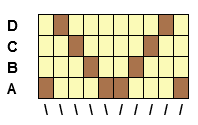
Similarly to previous threading options, this one also requires tablets to be positioned symmetrically around vertical axis in order to produce smooth diagonals. On diagrams left to right: 1 – tablets’ position as per threading diagram, tablets turned continuously in one direction; 2 – all tablets are in the same position (\), tablets turned continuously in one direction; 3 – tablets’ position alternates per tablet, tablets turned continuously in one direction; 4 – tablets’ position as per threading diagram, tablets turned in cycles: two times 4 forward-4 back, two times 2 forward-two back.
* Download a GTT pattern file. * Download this page in pdf format.
